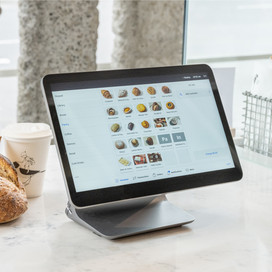Table of contents
For those new to the game, the terminologies of business can be quite confusing.
Part of the problem is that entrepreneurs need to become familiar with all aspects of their company, of which there are quite a few, meaning the business terms used are many and varied.
There are the acronyms, like KPI, B2B, CPL and SWOT. There’s the financial jargon, like accounts receivable, fixed costs, working capital and equity. Then there’s the tech talk, like CTR, PPC, user experience and bounce rates.
Whether you’re just starting out in the world of business, or simply feel as though you could do with a refresher, let’s take a look at 70 of the most common examples of business terminology, and exactly what each term means.
The 70 business terms an entrepreneur needs to know
1. A/B testing
A method of testing two versions of something (often an ad, a web page or an app) to determine which performs better.
2. Accounts payable
A record that represents a business’s obligation to pay off a short-term debt to a supplier or creditor.
3. Accounts receivable
A record that represents the money owed to a business by customers and other businesses.
4. Accrual basis
A method of accounting that sees revenue and expenses recorded when a transaction occurs, rather than when the money actually changes hands.
5. Accruals
Expenses and earnings that have been incurred, but for which money hasn’t yet changed hands.
6. Analytics
Using data to inform decision making.
7. Asset
Anything that has value and is owned by a business.
8. B2B
Describes dealings that are ‘business-to-business’.
9. B2C
Describes dealings that are ‘business-to-consumer’.
10. B2G
Describes dealings that are ‘business-to-government’.
11. Balance sheet
A report that summarises a business’s assets and liabilities to offer a snapshot of net worth.
12. Benchmarking
The process of comparing performance against external or internal numbers.
13. BoFu
‘Bottom of funnel’ describes the final, purchasing stages of the sales funnel.
14. Bookkeeping
The process of recording all business transactions.
15. Bounce rate
The percentage of visitors that leave your website soon after arriving.
16. Brand
A name, term or symbol that separates your business, product or service from others.
17. Business loan
A financial loan designed specifically for a business.
18. Buyer persona
A summary of the characteristics of a customer group or segment.
19. Capital
The wealth, either in money or assets, that is available to a business.
20. Cash flow forecasting
A forecast of a business’s future financial position used to inform today’s decision making.
21. Cash flow
The movement of money in and out of a business over a specific period of time.
22. CMS
A ‘content management system’ is software used to create, modify and distribute digital content.
23. Conversion rate
The percentage of users who complete a desired (and often digital) action.
24. Core competency
The defining traits and capabilities that distinguish a business from its competitors.
25. CPL
‘Cost per lead’ measures the marketing cost to acquire a single lead.
26. CRM
‘Customer relationship management’ software helps a business administer interactions with customers.
27. CTR
‘Click through rate’ measures how many people are moving through your ads or website and toward a desired action.
28. Deliverable
A tangible or intangible good, service or asset that is delivered as part of a project.
29. Demographics
Data points used to describe a group of people (age, sex, income, etc.)
30. Depreciation
The reduction in value of an asset over time, often due to wear and tear.
31. Digital marketing
Marketing conducted through the internet.
32. Ecommerce
Buying or selling products over the internet.
33. Equity
The ownership of assets, including related debts and liabilities. Equity is measured by subtracting debts/liabilities from the assets.
34. Evergreen
Content that offers value to the viewer no matter how old it is.
35. Fixed asset
Assets that are difficult or unlikely to be converted into cash (machinery, furniture, real estate, etc.)
36. Fixed costs
Costs that a business must pay regardless of performance (utilities, rent, salaries, etc.)
37. Friction
Anything that deters a customer from doing business with an organisation.
38. Gross profit
Total sales minus direct cost (materials, labour, marketing, delivery, etc.)
39. Gross
Total income before any costs, discounts or returns are deducted.
40. Inbound marketing
Using digital marketing strategies like content marketing, SEO and social media to attract or draw in new business.
41. Incentivise
Using rewards to motivate a customer or team member to complete a desired action.
42. Income statement/profit & loss statement
A report that shows a business’s revenues and expenses over a specific period.
43. Infographic
A piece of visual content that combines text, images and clever design to make complex information easier to understand.
44. Intangible asset
Non-physical assets, such as patents, copyright, software and intellectual property.
45. Inventory management
The process of ordering, organising, storing and utilising inventory.
46. KPI
A ‘key performance indicator’ is a metric that measures effectiveness, whether of actions, team members or the business as a whole.
47. Liability
A debt or expense that a business is legally obliged to pay, from wages and bills to taxes and loan repayments.
48. Liquidity
A gauge of how quickly an asset can be converted into cash for full market value.
49. Margin
The profit of a sale represented as a percentage after expenses are accounted for.
50. Market penetration
The sales volume of a product or service compared to the total market for the product or service.
51. Market research
The process of gathering intelligence about the needs and wants of your customers to inform your offering.
52. Marketing
The promotion of your business, products and services with the intent to sell.
53. Metrics
A quantifiable measurement used to assess business performance.
54. MoF
‘Middle of funnel’ describes the middle section of the sales funnel, in which a business explains how it can solve a problem or meet a need.
55. Monetise
To earn money from an activity.
56. Net
The amount remaining after all expenses, costs and deductions have been accounted for.
57. Niche market
A small and specialised market for a specific product or service.
58. Performance review
The evaluation of team members in order to identify strengths, weaknesses and areas of improvement.
59. POS
‘Point of sale’ is the time and place where a transaction is completed.
60. PPC
‘Pay per click’ is a form of digital marketing where you only pay if a user clicks on your ad.
61. R&D
‘Research and development’ is the process of developing or enhancing products and services.
62. ROI
‘Return on investment’ is measured as the ratio of net income against investment.
63. Sales funnel
A model that describes the journey of a customer, from initial awareness through to making a purchase.
64. SEO
‘Search engine optimisation’ is the process of enhancing your website in order for it to rank higher on a search engine results page.
65. SWOT
An analysis of a business’s ‘strengths, weaknesses, opportunities and threats’.
66. ToF
‘Top of funnel’ describes the beginning of the sales funnel, in which a customer is looking for a solution that you offer.
67. UX
‘User experience’ is most commonly used to describe the quality of the experience of using a piece of technology.
68. USP
Your ‘unique selling proposition’ is what differentiates your offering from those of your competitors.
69. Variable costs
Expenses and costs that fluctuate based on the volume of business.
70. Working capital
The monetary resources needed to maintain day-to-day business operation.
Ready to put some of these business terms to use in your own business? No matter whether you’re looking to set up an online store, find an easy way to take point of sale payments, or manage a growing team, Square is ready to help!
![]()












